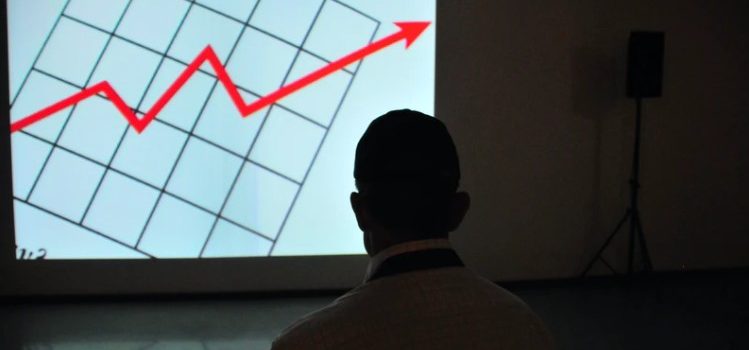

This article is an excerpt from the Shortform book guide to "Going Infinite" by Michael Lewis. Shortform has the world's best summaries and analyses of books you should be reading.
Like this article? Sign up for a free trial here.
What were the strengths and weaknesses of FTX? How did Sam Bankman-Fried win the confidence of customers?
Sam Bankman-Fried found success with his first company, Alameda Research. But, it still didn’t satisfy his desire to practice effective altruism on a grand scale. Biographer Michael Lewis relates why Bankman-Fried started FTX and how the company secured early success.
Keep reading to learn about Sam Bankman-Fried and FTX before its collapse.
Sam Bankman-Fried and FTX
The story of Sam Bankman-Fried and FTX begins with Alameda Research, his first company. Although Alameda Research became wildly successful, as of 2018, Bankman-Fried didn’t believe it was earning enough money for effective altruism. Of its $30 million profit that year, Alameda had to pay the majority to former investors, taxes, and severance packages, leaving only $1.5 million to donate to effective altruism causes. Lewis writes that, consequently, Bankman-Fried decided to open FTX, an international cryptocurrency exchange, in April 2019 to earn even more money.
Cryptocurrency exchanges, Lewis explains, provide a platform for purchasing and selling an array of cryptocurrencies for a small fee. They require an immense amount of trust in order for customers to deposit thousands (or even millions) of dollars on the platform. But, as Lewis points out, Bankman-Fried’s personality didn’t instill trust—a social outcast who played video games during crucial meetings wasn’t the person you wanted managing your money. For this reason, Bankman-Fried focused on two key aspects of FTX to develop consumer confidence: its technical superiority and its endorsement deals.
(Shortform note: Although cryptocurrency exchanges crucially depend on trust, widespread hacks to the tune of nearly $4 billion in 2022 have eroded this trust. For instance, North Korean hackers stole over $600 million in crypto from the Ronin Network exchange in March 2022, and FTX’s formerly largest competitor, Binance, suffered a $570 million hack in October 2022.)
FTX’s Technological Superiority
To prove that his new platform was reliable, Lewis says, Bankman-Fried created a cryptocurrency exchange that was technologically superior, especially when it came to futures—contracts that allow customers to make outsized bets on whether cryptocurrencies would rise or fall, using a smaller proportion as collateral. For example, if one Bitcoin was trading at $20,000, you could pay $5,000 as collateral to enter into a futures contract with a seller that obligates you to purchase Bitcoin at $20,000 one month in the future. Then, if Bitcoin rose to $22,000, you would purchase it at $20,000 and immediately sell at $22,000 to net a $2,000 profit (in addition to retaining your collateral). By contrast, if Bitcoin dropped to $16,000, the $4,000 loss would be taken out of your collateral.
(Shortform note: Futures contracts can be settled in two ways: through physical delivery or with cash. Physical deliveries mean that, at the contract’s end date, the buyer receives the cryptocurrency and pays the seller the agreed price—in the previous example, the buyer would pay $20,000 and receive one Bitcoin, which he could sell if he chose to. Cash settlements, by contrast, involve the buyer and seller each receiving their net profit (or loss) rather than the cryptocurrency. For instance, if Bitcoin rose to $22,000, the seller would wire the buyer the $2,000 difference between the agreed price of $20,000 and the current price of $22,000, rather than sending the buyer one Bitcoin for $20,000 and making the buyer sell it to earn $2,000.)
Before FTX, cryptocurrency exchanges were often liable for losses that exceeded their customers’ collaterals. Returning to the previous example, if Bitcoin dropped from $20,000 to $13,000, your $5,000 collateral wouldn’t be able to cover the loss. Thus, these losses were often socialized, meaning they were taken out of other customers’ accounts. However, Bankman-Fried’s FTX cofounder, coding expert Gary Wang, designed a new system that instantly liquidated losses that outstripped customers’ collateral, which avoided socialized losses. Thus, FTX instantly became more attractive than other exchanges without that feature.
(Shortform note: Further complicating the issue of collaterals on cryptocurrency exchanges is the fact that many such exchanges now allow you to use crypto itself as collateral. For example, if you wanted to purchase a futures contract for $20,000 worth of Ethereum, you could use $5,000 worth of Bitcoin as collateral for that contract. This practice makes it more likely that your losses could exceed your collateral, since your collateral itself could drop in value—for instance, if Bitcoin dropped such that your initial $5,000 collateral was now only worth $3,000, then a drop in Ethereum’s price of only $3,000 (rather than the initial $5,000) would max out your collateral.)
FTX’s Endorsement Deals
Lewis writes that Bankman-Fried also sought to generate customer trust through endorsement deals with celebrities whose personalities were more magnetic than his own. For example, he paid Tom Brady $55 million for 20 hours of his time, in addition to paying Steph Curry $31.5 million and Shark Tank entrepreneur Kevin O’Leary nearly $16 million. Bankman-Fried understood that these figures would be more appealing to his target audience—younger men—than he could ever hope to be.
(Shortform note: In the wake of FTX’s collapse, FTX’s celebrity spokespersons were hit with a class-action lawsuit, including Brady and comedian Larry David. The plaintiffs alleged that because FTX was a platform for trading securities, these celebrities were required by the US Securities and Exchange Commission (SEC) to disclose their financial agreements with FTX, unlike normal endorsement deals that require no such disclosure.)
Thus, as Lewis relates, Bankman-Fried managed to develop another company that was on a similar scale to Alameda Research—in both 2020 and 2021, FTX earned over a billion dollars annually in revenue, becoming the world’s second-largest cryptocurrency exchange in the process. In 2021, Bankman-Fried even raised $2.3 billion from venture capitalists in exchange for a 6% stake in FTX, suggesting that FTX was then worth around $40 billion.
(Shortform note: In light of FTX’s astounding rise in the cryptocurrency world, some financial analysts—such as Sequoia Capital partner Michelle Bailhe—thought that Bankman-Fried had a legitimate chance to become the world’s first trillionaire. Following his arrest, however, Bankman-Fried’s net worth plummeted to a low of $4 million in October 2023.)
FTX’s Lack of Organizational Structure
Although FTX became the cornerstone of Bankman-Fried’s cryptocurrency empire, Lewis argues that FTX nonetheless suffered from a nonexistent organizational structure. Lewis reports that, according to FTX’s company psychiatrist George Lerner, Bankman-Fried notoriously hated organization charts, refusing to assign anyone in FTX formal titles—even as the company ballooned to over 300 employees.
Lerner thus attempted to develop an organizational chart himself, which to date is the only organizational chart of FTX. He found that, despite its financial success, the company was structurally in disarray. It had no chief financial officer, no chief risk officer, and nobody working in human resources. And, this total lack of structure made it difficult for any of FTX’s employees to see the concrete reasons behind its later collapse.
(Shortform note: According to experts, a lack of initial organization can help startups like FTX grow and evolve faster than their competitors. But, as startups grow into larger entities, it becomes more necessary to develop a hierarchical organizational structure that clarifies who reports to whom. Without such an organizational structure, employees are likely to be confused about the tasks assigned to them and are unsure who they should ask for clarification. Thus, although hierarchical organization charts can feel stuffy and inefficient, they often prevent burgeoning startups from falling into disarray.)

———End of Preview———
Like what you just read? Read the rest of the world's best book summary and analysis of Michael Lewis's "Going Infinite" at Shortform.
Here's what you'll find in our full Going Infinite summary:
- How Sam Bankman-Fried created an empire—and then destroyed it
- A look at Bankman-Fried's life before he became a crypto mogul
- How effective altruism led Bankman-Fried to his career in finance






